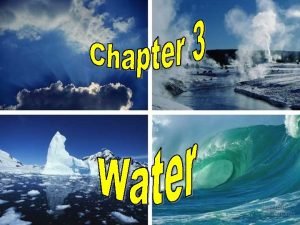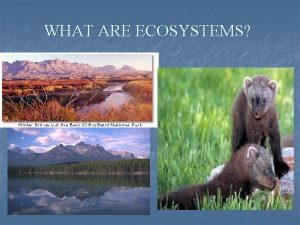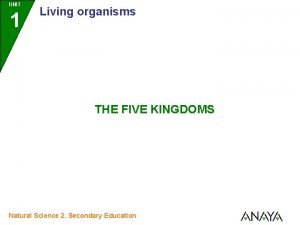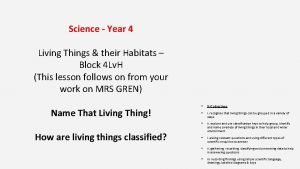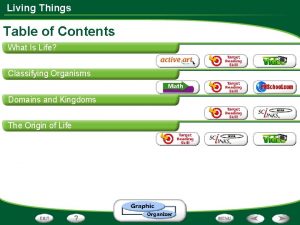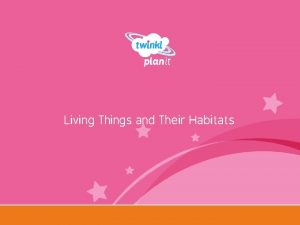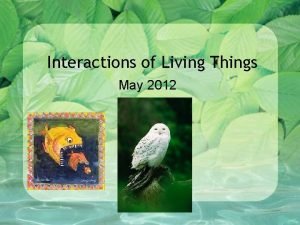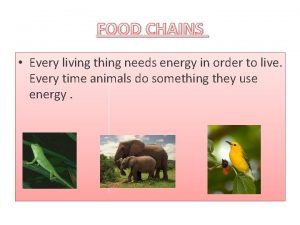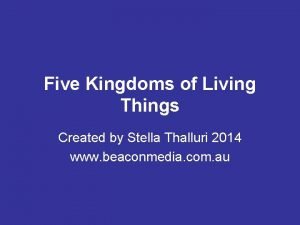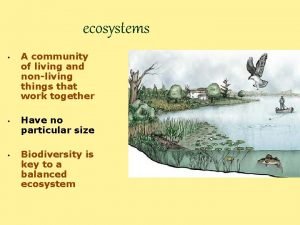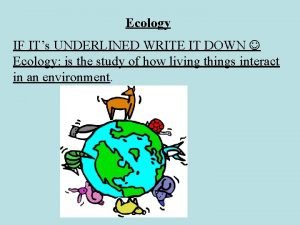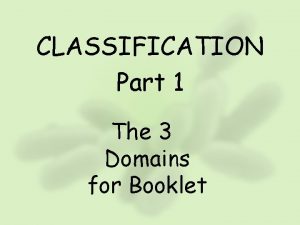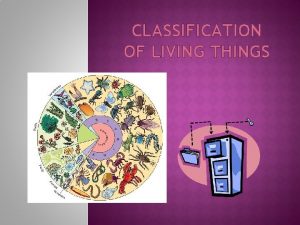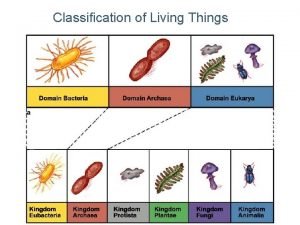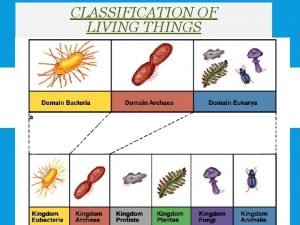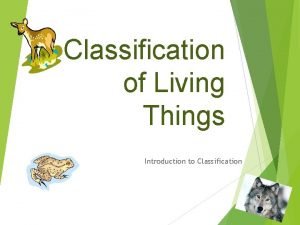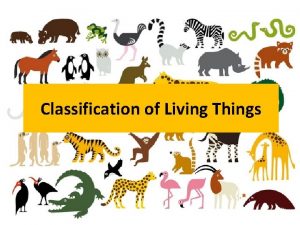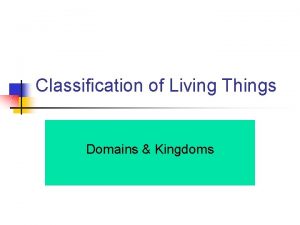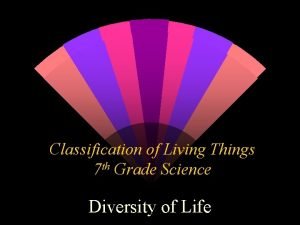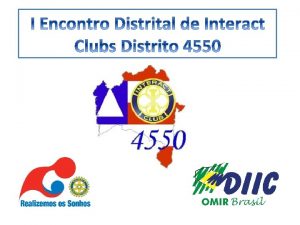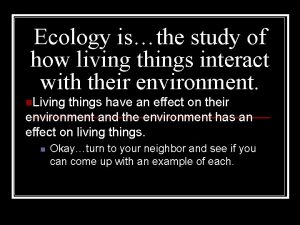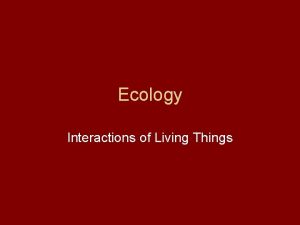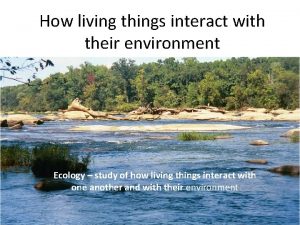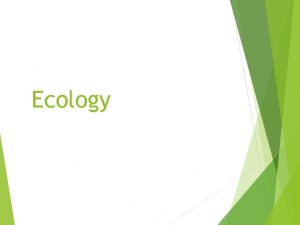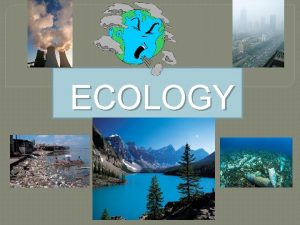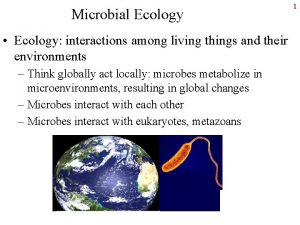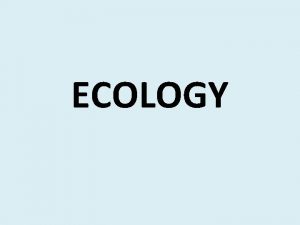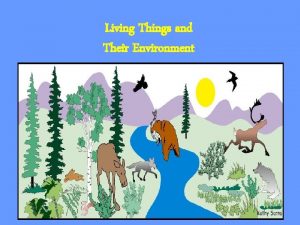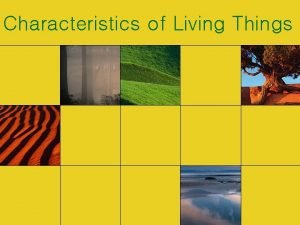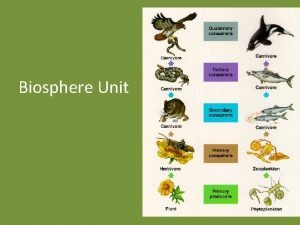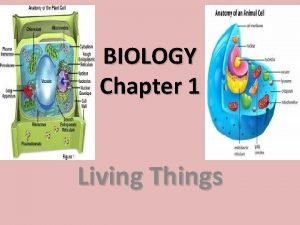Ecology Ecology study of how living things interact




























- Slides: 28

Ecology

Ecology: study of how living things interact with each other & with their environment.

Ecosystem: a community of interacting organisms and their environment Biotic factors: The living or once-living parts of an ecosystem. Ex: animals, decayed remains, animal waste, plants, bacteria, fungi, etc. Abiotic factors: The nonliving parts of an ecosystem. Ex: H 2 O, soil, sunlight, temperature, etc.

aquatic: living in H 2 O (fresh or marine) terrestrial: living on land

Habitat- a natural place for an organism to live, the place within an ecosystem that provides the biotic and abiotic factors an organism needs to survive and reproduce, a single ecosystem can contain many habitats This wetland ecosystem contains several habitats. How many can you see?

Population- all the organisms of the same species that live in the same area at the same time. Community- all the populations living in an ecosystem at the same time

Niche- the way a species interacts with abiotic and biotic factors to obtain food, find shelter and fulfill other needs

The Wolf and the Moose https: //youtu. be/Pdwnf. Pur. Xcs

Biosphere Biome ECOSYSTEM ↑ COMMUNITY ↑ Population ↑ organism


Biosphere- World Biomes

Predation: interaction in which one organism kills & eats another • Predator = killer • Prey = killed Competition: struggle between organisms to survive in a habitat w/ limited resources. Anything that restricts the number of individuals in a population is a limiting factor.

Symbiosis- a close, long-term relationship between two species that usually involves an exchange of food or energy.

Mutualism- both species benefit from the Ex: relationship ● Bees & flowers pollinate flowers and collect nectar ● Oxpeckers and rhinos In this relationship, the oxpecker (a bird) lives on the zebra or rhino, sustaining itself by eating all of the bugs and parasites on the The Acacia and the Ant https: //youtu. be/Xm 2 qdx VVRm 4

Commensalism- one species benefits from the relationship. The other species is neither harmed nor benefited. Ex: ● Cattle egret and Livestock- The cattle egret benefits because it eats insects that are stirred up when the livestock move through the grass. ● Barnacles and Whales. Barnacles are a type of crustacean that attach to whales. Barnacles cannot move on their own, so they use the whale to move around and find locations with food.

Parasitism- one species (the parasite) benefits and the other species (the host) is harmed. Ex: ● Fleas or ticks that live on dogs and cats are parasites. They are living off of the blood of the host animal. ● Lice are another type of parasite. They live off of the blood of the host animal ● Most species of cockatoos will lay their eggs in the nests of other birds, in the hopes that the other bird will raise the babies. Cockatoos often remove an egg (or more) from the nest to decrease suspicion over the additional eggs.

Producer: makes its own food Consumer: feeds on other organisms • Herbivore: eats plants (rabbit, cow, elephant) • Carnivore: eats meat (wolf, cat, snake) • Scavenger: feeds on already dead organisms (vulture, crab) • Omnivore: eats both plants & animals (human, bear, crow)

Decomposer: also called detritivores • break down wastes & dead organisms • return raw materials to the environment (fungi, insects, worms)

Food Chain: series of events in which one organism eats another & obtains energy • 1 st in series = the producer • Next = first level consumer (which eats a producer) • Next = second level consumer Predator and Prey https: //youtu. be/Csf. JL-IIVz 4 (which eats a 1 st level consumer,




Food Web: consists of many overlapping food chains • Most animals eat or are eaten by more than one thing


Energy Flow in Ecosystems The flow of energy can be represented by an energy pyramid. An energy pyramid shows the amount of energy that moves from one feeding level to another in a food web. It loses energy as it goes up. Only 10% of energy goes to next level. Amoeba Sisters: Food Webs and Energy Pyramids: Bedrocks of Biodiversity https: //youtu. be/-o. Vavgmvey. Y



Biomes are a large group of ecosystems determined by temperature and amount of precipitation. These abiotic factors largely determine what kinds of plants grow in an area which, in turn, provides niches for different animals. Organisms in that biome are adapted to that environment.
 Pyramid hesd
Pyramid hesd Smallest living unit of life
Smallest living unit of life The seven life processes
The seven life processes Is tomato living or nonliving
Is tomato living or nonliving Living non living dead
Living non living dead Why is water important to living things
Why is water important to living things Non living things in temperate forest
Non living things in temperate forest What are the five kingdoms of living things
What are the five kingdoms of living things Life's structure and classification answers key
Life's structure and classification answers key Living things meaning
Living things meaning Ecosystem living and nonliving things
Ecosystem living and nonliving things Cho cho chon chonp
Cho cho chon chonp Living things table
Living things table Jackal linnaean system
Jackal linnaean system 6 kingdoms of life
6 kingdoms of life Living things 20
Living things 20 Gets its energy from eating living things
Gets its energy from eating living things Flow of energy in a food chain
Flow of energy in a food chain 5 groups of living things
5 groups of living things Ecosystem living and nonliving things
Ecosystem living and nonliving things Gets its energy from eating living things
Gets its energy from eating living things Kingdoms of archaea
Kingdoms of archaea A genus is subdivided into smaller groups called
A genus is subdivided into smaller groups called 8 levels of classification in order
8 levels of classification in order Dichotomous key shark activity
Dichotomous key shark activity Genus and species difference
Genus and species difference 5 groups of living things
5 groups of living things Domain of living things
Domain of living things What are the 7 classifications of living things
What are the 7 classifications of living things





